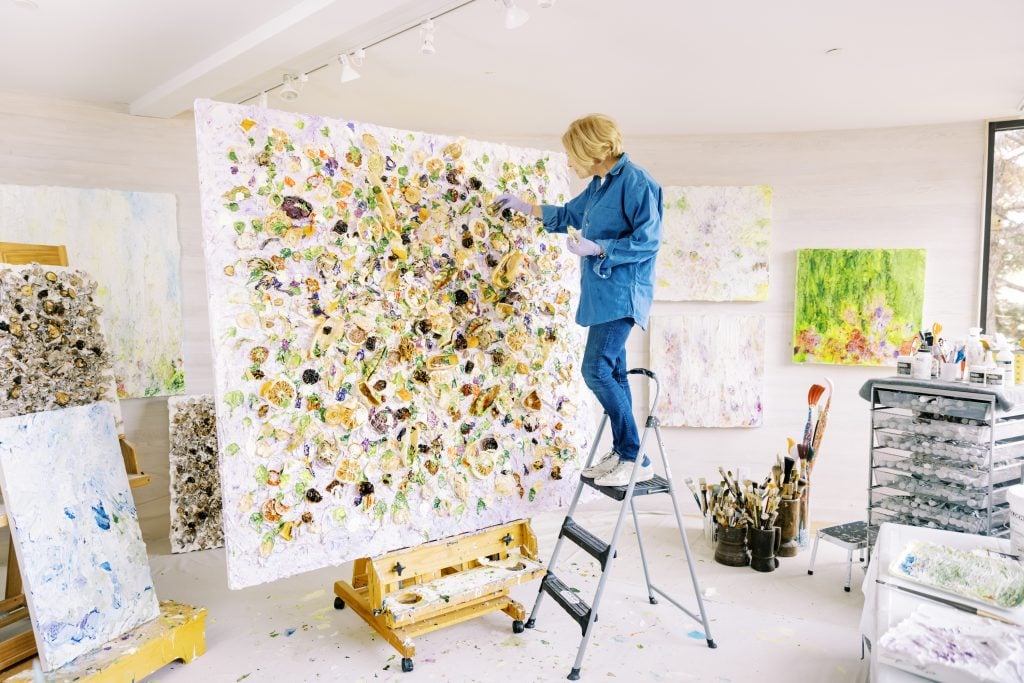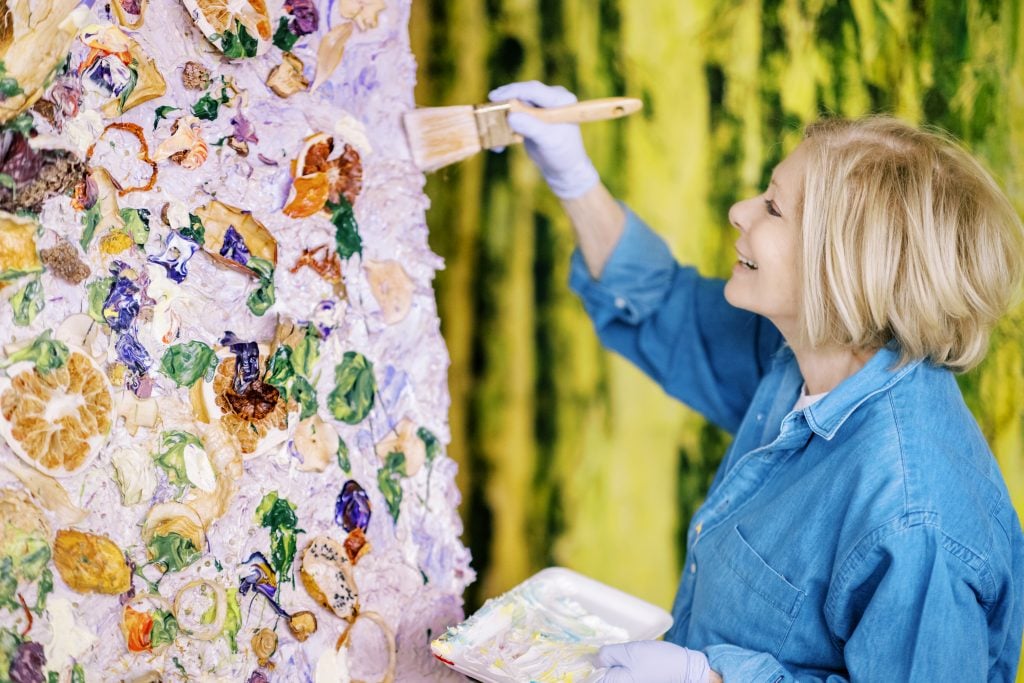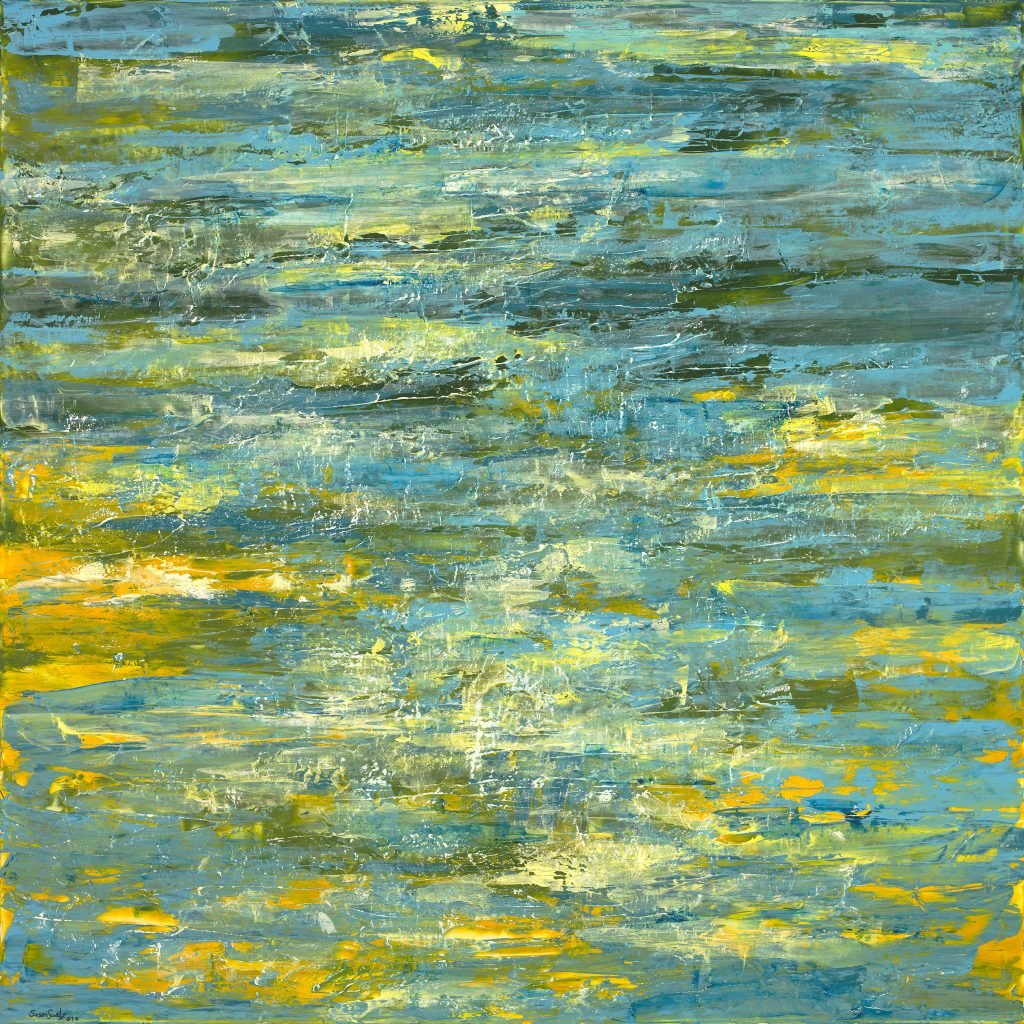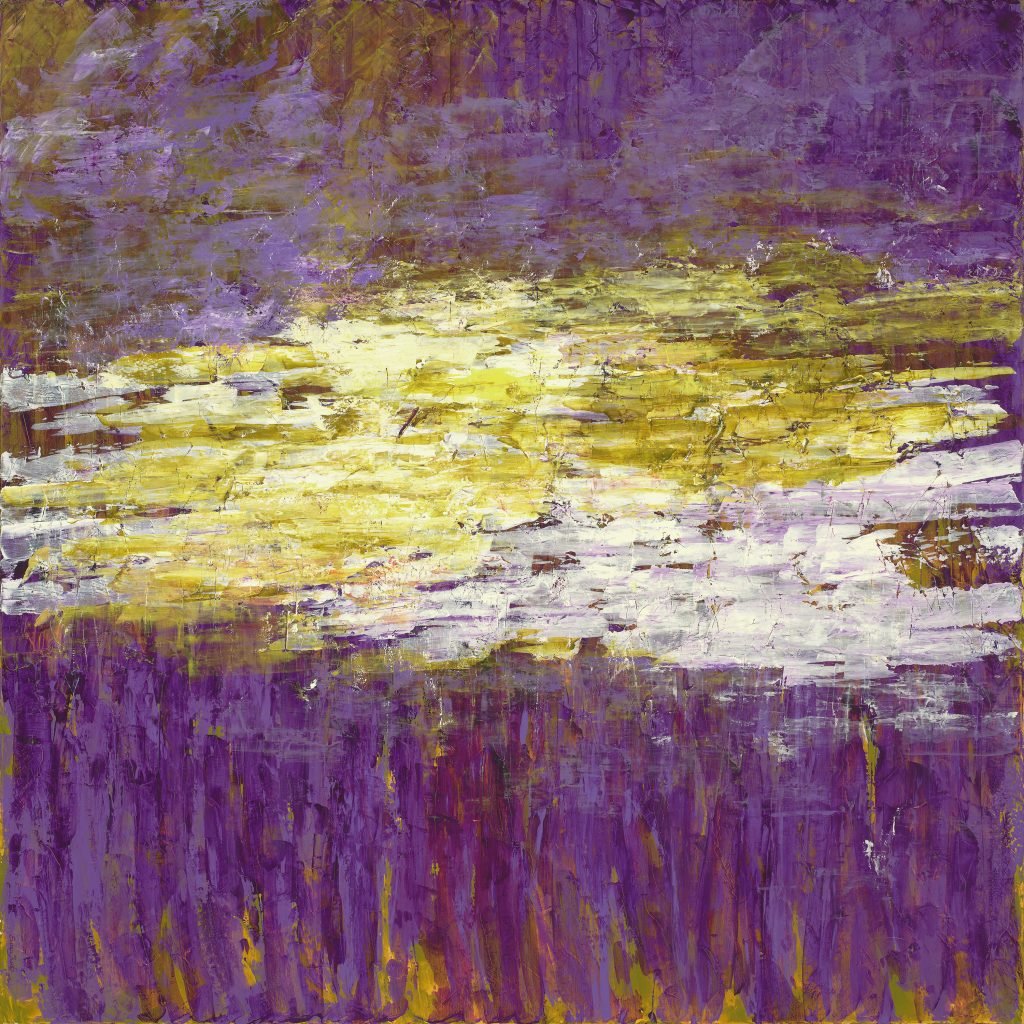Gallery Network
7 Questions for Eco Activist and Painter Susan Swartz as Her Touring Exhibition Heads to Her Hometown of Park City
After a four-year world tour, "Arrival" is on view in in her home city for the first time.

After a four-year world tour, "Arrival" is on view in in her home city for the first time.

Throughout her long and fruitful career, the Park City, Utah-based artist Susan Swartz has continued to find beauty and inspiration in the wonders of the landscapes. Her paintings have evolved from the realist landscapes of her early career to lyrical and radiant abstractions of her recent creation. Her contemplation of the intersections of art, nature, and spirituality, however, has remained steadfast.
For the past four years a curated collection of her works have been touring to museums around the world, including the Ludwig Museum at the Russian State Museum in St. Petersburg, China’s Central Academy of Fine Arts in Beijing, and Melides Art Pavilion in Melides, Portugal. This month her works will be coming home to Park City, Utah, where they will be on view for the first time. These powerful paintings embody an important period in Swartz’s life when she was regaining her health after a decade-long battle with Lyme disease and mercury poisoning. Art historian Alexander Borovsky described these dazzling paintings as possessing qualities “of the almost…optical, of the tactile, even the acoustic.”
In addition to her painting, Swartz is a devoted philanthropist. She sits on the advisory board of the National Museum of Women in the Arts and is the founder of Impact Partners, an award-winning film production group focused on pressing social issues.
Recently, we spoke with Swartz, who shared insights into her practice.

Susan Swartz painting in her Park City studio, 2021.
The paintings on view in “Arrival” are selected from the four-year international solo tour “Personal Path” and are being shown in your home city for the first time. Can you tell me about the work and what it means to have it on view there?
The international tour was aptly named ”Personal Path” by the curators because each work in the exhibition represents a specific place and time in my evolution as an artist. Every piece in its own unique way reflects what I was thinking or feeling at different junctures. I constantly challenge myself in the studio, so it is comforting to have these works back as a visual reminder of those challenges, experiments, and joys I experienced along the way. It is a such a pleasure to be able to share it, especially with local collectors and people in my community who have supported me throughout my career.
These paintings are in some sense about your relationship with nature. How does that play out in the works?
Nature has always been my greatest source of inspiration. During the 2002 Winter Olympics in Salt Lake City, I was chosen to represent the U.S. as an environmental artist. I came to understand how my work might help to raise awareness about the increasing fragility of nature. Mankind’s carelessness with the natural world has had a very personal effect on my health. I now paint from a place of impassioned reverence for nature and a determination to see it preserved. Nature is what sustains us. We seem to have forgotten this truth.

Susan Swartz, Waters Mirage. Courtesy of Susan Swartz Studio.
You completed these paintings after your recovery from Lyme disease and mercury poisoning. Can you tell us about that journey and how your work has transformed throughout your illness and return to health?
Fifteen years ago I was diagnosed with these two environmentally-borne illnesses, and I became seriously ill and debilitated. I never stopped painting, but as I fought to survive, my art began to change dramatically. My work became bolder and more abstract. Now, more than ever, I see each and every day as a gift; I constantly explore new techniques and experiment with different mediums and tools to create interesting textures. My paintings are a visceral expression of the joys and challenges I have experienced.
Can you tell me about your relationship with Germany’s Foundation for Art and Culture?
I have worked closely with the Foundation for Art and Culture since 2014, when my exhibition “Personal Path” debuted in Salzburg, Austria. I credit the opportunity to realize and tour ”Personal Path” to my friend and professional champion, Walter Smerling, who is the Foundation’s chairman. He recognized my work early on and has orchestrated many of my international exhibitions and events since then. Walter has been a constant supporter and has encouraged me to continue to push myself creatively.
You also founded a documentary film organization, Impact Partners, which uses storytelling as a tool for social change. Can you tell me more about why you founded the organization? What are some of your successes?
I see myself as both an artist and an activist, using film and painting to convey the same message. I became involved with Impact Partners to support documentary filmmakers who shed light on environmental and social injustices. My illnesses inspired the production of two films: Under Our Skin is a documentary about Lyme disease, while Mercury Rising—the companion film to Academy Award-winner The Cove—examines the dangers of mercury poisoning on the global environment. My work as a film producer has encouraged me to think about my personal challenges within a global context.

Susan Swartz, Evolving Visions. Courtesy of Susan Swartz Studio.
Your first museum solo exhibition was at the National Museum of Women in the Arts in Washington, D.C., in 2012, and you later joined the museum’s board. How did this opportunity affect your career, and what do you hope the museum can do for other artists?
I visited the NMWA shortly after its opening in 1981, and on that first visit, I remember thinking, ‘Maybe someday my work will be here…’ It’s an incredible privilege now to have one of my paintings in the permanent collection of this institution that is dedicated to promoting and honoring women artists. The museum’s founder, Billie Holladay, and NMWA were really the pioneers in giving equal footing to women artists. Such profound institutional support allows us to dream and inspires us to persevere. By bringing to light remarkable women artists of the past while also promoting the best women artists working today, the museum directly addresses the gender imbalance in the presentation of art in the U.S. and abroad, thereby securing great women artists a place of honor in the history of art.
The exhibition “Arrival” signals the expanding international footprint of your work, as the pieces have moved from exhibitions in Hungary, Russia, China, Portugal, and so forth. What are you looking forward to next?
The title “Arrival” has a few meanings. It suggests travel, of course, and my work has arrived back in Park City after several years of touring internationally. But I also feel that I have arrived at a new place creatively. In my latest series, “Evolution of Nature,” I have incorporated dried flora, herbs, and other nutrient-rich elements to create layers of texture and depth. I am excited about this new, increasingly sculptural direction, which is intimately linked to my path to optimal health. The series just debuted during my latest solo exhibition at Galerie Noack in Berlin, which closed on October 8, but can also be viewed online. I’m currently conceiving a new series to present during the Venice Biennale next year. I am feeling ever more expansive creatively and grateful to be at this new place in my professional life. And I have never had more fun in my studio in my life—which, for me, is the penultimate meaning of arrival.